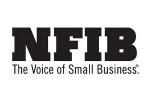WASHINGTON — Many small-business owners, such as most dry cleaners, often make plans for their companies at the first of the year, but sometimes those plans fall by the wayside as the day-to-day activities crowd out bigger-picture strategies. Taking a look at progress around the half-way point of the year can serve to measure the effectiveness of our efforts, or to get things back on track.
This was the focus of “Small Business Mid-Year Checkup — Trends and Tips for 2024,” an online discussion held by the National Federation of Independent Business (NFIB), and hosted by Beth Milito, executive director of NFIB’s Small Business Legal Center, and Holly Wade, the executive director of the NFIB Research Center
In Part 1 of this series, we looked at what makes for effective marketing efforts in 2024, and today, we’ll continue our mid-year check by examining how dry cleaners can boost their online presence and deal with negative reviews.
Your Online Space
A company’s online presence has grown in the past few years from something “nice to have” to something that is critical for success, Wade says.
“It started with services and retail, but it seems now that an online presence for almost every industry is necessary,” she says, adding that, besides wanting to know services available and hours of operation, “customers look for it because it often legitimizes the business if they have a professional, organized online presence.”
The cornerstone of an effective online presence, Wade says, is the company’s website.
“Again, we know that this is often time-consuming and can be overwhelming, but ensuring that your website is responsive, as well as user- and mobile-friendly, is so important,” Wade says.
Being usable on a smartphone is an area that is vastly more important than it was just a few years ago.
“Website design, unfortunately, has become more extensive and complicated, because the mobile phone format is often the primary source of those looking for businesses,” Wade says. “Make sure that your website presence is also available in those alternate formats, so that whichever platform that they're using to access your website, they can have a professional, responsive view of what's available from the content for your business.”
Getting Social
While having a website has gotten more complicated because of smartphone use, social media strategies can change from day to day. For dry cleaners wanting to stay in contact with their client base using this technology, it’s important to keep up and weigh all options.
“Having a structured strategy related to social media is necessary because there are so many platforms,” Wade says. “If this is a tool that most of the businesses in your industry are using, it is often helpful to have a strategy related to this to minimize complications, confusion and time required to extend your message and your marketing on these platforms.”
Wade says that a best practice highlighted by past NFIB guest speaker and marketing expert Donna Botti, owner of Delos Incorporated, is maintaining the company’s website as the main source of information, and then going from there.
“Your business website is the primary tool, and then disseminate that content to the various social media platforms,” Wade says, “so you're not recreating the wheel for each platform. You're just taking what's available on your main website that you control.”
And “control” is an important term, because the company’s website is the only thing in this equation that the owner does control.
“You control your website,” Wade says, “and at the basic foundation, you don't control the various platforms — Instagram, Facebook, Twitter, X, TikTok or others. If your content originates on one of those platforms, it can go away. If you have it on your website, then that's where it all starts from, and you can control where you disseminate it.”
Which Platform?
The fact that there are more social media platforms all the time, and existing platforms can change their algorithms to affect the reach of a message, means that company owners and managers must keep up with the times and make some decisions.
“Try out different platforms to see what resonates for you,” Wade says, “and maybe have an employee, one who has some extra time and might be more adept at some of these platforms, track and see which ones are being most utilized by customers or potential customers. Then, tailor your message for those platforms that best suit your industry.”
Tracking is especially important because not all demographics use the same social platform. The company should make sure it uses the same platforms as its customer base.
“If you have messaging or marketing material on a number of platforms,” Wade says, “it's taking up a lot of resources. You find that, for instance, not many people are looking at TikTok. You can put that aside and refocus on those platforms that make more sense to use.”
Having a Voice
While someone more well-versed in social media and website design might eventually become an outside hire, Milito says owners can look within the company at first.
“Is it really worth the expense of hiring an employee just for that?” she asks. “You may have an individual who works for you, who just is adept at doing this and doesn't mind doing a weekly Instagram post and then sharing that with Facebook, or helping you with your website content. It doesn't necessarily mean, at least initially or maybe ever, that you actually need to hire a dedicated individual to handle online marketing.”
Milito believes that “bite-sized chunks” are the way to proceed when starting or adding to a digital marketing strategy.
“Start small, if you haven't done anything,” she says. “Perhaps start freshening up your website, and then expand into some of the social media platforms. Don't make it so overwhelming.”
Again, consistency is king when it comes to online communication.
“Task maybe yourself or one other employee so you're speaking with one voice when you're doing these posts,” Milito says. “Also, put in a calendar reminder — ‘It’s Monday afternoon, time to do my weekly Instagram and Facebook posts’ or whatever it is.”
Online Advertising
“Purchasing targeted ads for social media and search engines can be very costly,” Wade says. “For small businesses, you might not know whether it is targeting the right people.”
For dry cleaners doing their own online advertising, however, there are tools available that can help to answer these questions.
“Whether you have time as the owner, or you can find an employee who might have some skills in this area, you can monitor the analytics of using these ads using tools like Google Analytics,” Wade says. “You can see whether you're maximizing your outreach to your customer base and potential customers, and seeing if it makes sense for you to continue on with those targeted ads. You’ll want to make sure that they're targeted so that you're not paying for a wide net when you can be more specific. Spend a little time on the front end of seeing what makes more sense for your business.”
It's also important to stay on top of the analytics because the effectiveness of even profitable ads can change over time.
“Make sure that you monitor to see if you're actually reaching that intended target audience for the money and budget that you're putting towards in social media and search engine ads,” Wade says. “We know that online advertising can get out of control. It can be expensive, and often difficult, but think it through and have a strategy put together. This includes calendar reminders for checking the analytics on the ads you place and seeing how they are reaching the customer base that you’re looking for.”
Managing Customer Reviews
One of the benefits of online advertising and outreach is that satisfied customers can leave reviews letting current and potential customers know more about their experiences with your company.
This, however, can become a drawback if the company doesn’t address negative reviews that might show up.
“This can be very daunting, intimidating and frustrating,” Wade says, “but there are some ways to help manage that.”
When someone leaves a negative review on Google, Yelp or other social media platforms or websites, she says, “the tips we thought resonated most and would be most helpful are responding promptly to negative reviews, and responding professionally and respectfully. It’s a good course of action so that other customers are seeing how the business is responding to those kinds of tricky situations.”
One way to counteract negative reviews is to have more positive reviews — something many business owners forget to ask their satisfied customers to submit.
“Encourage positive reviews from your customers after you've interacted with them,” Wade says. “Have something by the cash register, or on your website, saying, ‘We'd love to hear your positive reviews — please post!’”
“I saw a sign recently that I really liked in a small business,” Milito adds, “and they had it at the front by the checkout counter — ‘Love us, Yelp us! Have a problem? Please let us know.’ The sign had the manager's name there. So, in other words, they were discouraging the negative reviews by having someone there to handle the complaints before they were posted online.”
Owners and managers should also train their teams on how to handle negative feedback, Wade says.
“Often, it's kind of just left up to employees if they run into a customer that's having an issue, a problem or a negative comment,” she says. “Make sure that the employee knows how you want them to best handle those situations, instead of them just having those interactions the way they think they should, because it might not always align with how you want that to be handled.”
This can help defuse the situation and potentially avoid negative feedback posted online.
“When you train your team on how to deal with those negative interactions,” Wade says, “You're more in control of how your business is represented in those kinds of challenging interactions.”
Again, the calendar can be a useful tool for staying on top of potentially developing situations.
“Have a calendar reminder that, at 2 p.m., make sure to check the social media platforms to see if there are any new comments that we've received over the last 48 hours so I can respond properly,” Wade says. “Make sure you monitor those comments regularly so that you can promptly respond and that your customers see that you're interacting, that their feedback is important to you, and you resolve issues that might come up.”
Come back Thursday for the conclusion of this series, where we’ll look at ideas for recruiting new employees in a challenging labor market. For Part 1 of this series, click HERE.
Have a question or comment? E-mail our editor Dave Davis at [email protected].












































































































